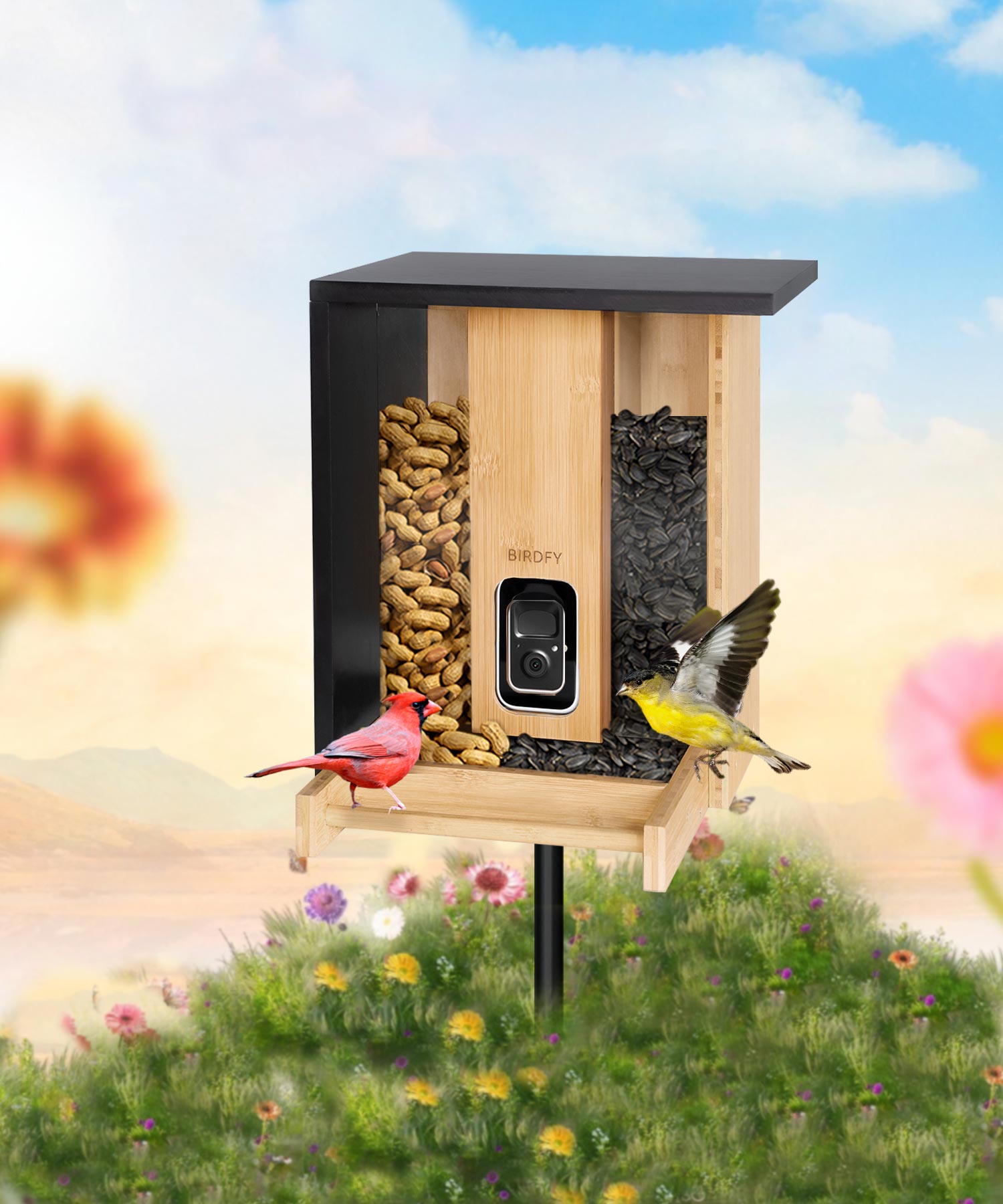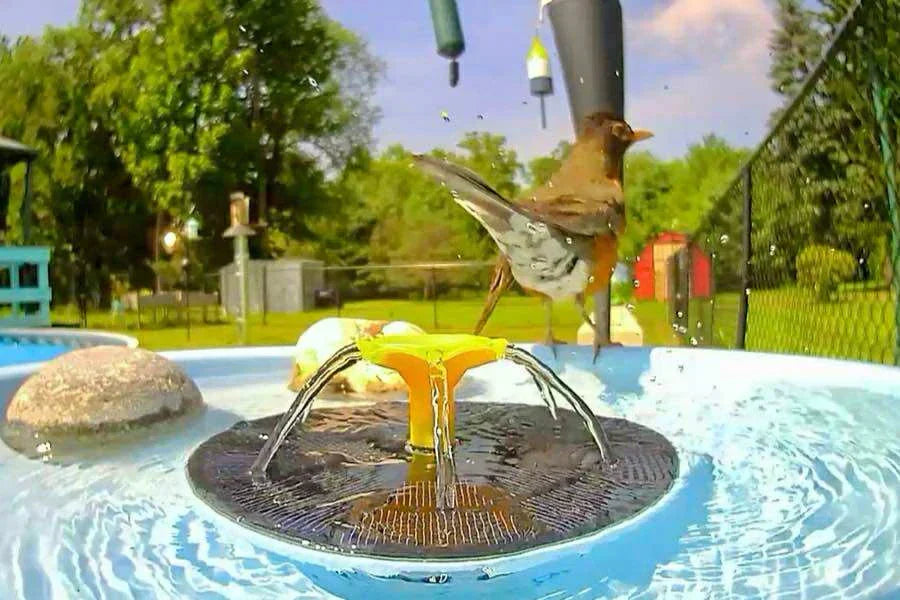By Gary S. Locatelli
Gary Locatelli is a lifelong animal lover and his passion for birds began over 35 years ago, starting with a simple spyglass to watch birds outside his apartment window. During the pandemic, his discovery of live bird feeder webcams rekindled his enthusiasm, leading to his first Birdfy feeder.
Gary's collection has expanded to include many Birdfy feeders, a nest and bird bath, also gifting a Birdfy feeder to his brother in Virginia, allowing them to share their birdwatching experiences through the Birdfy app despite the distance.
At home, Gary shares his life with two rescued pets, Jack, a 25-year-old Quaker parrot, and Wrigley, a 9-year-old Yorkshire terrier.
A lot of places right now are experiencing soaring temperatures and sun beating down and it’s not just us humans who feel the heat, our feathered friends do too. Summer can be a challenging season for birds, especially as water sources dry up and food becomes scarce. By understanding how extreme heat affects birds and taking a few simple steps, you can turn your yard into a much-needed oasis. Here’s how to help birds in summer and why your efforts matter.
What Temperature Is Too Hot for Birds?
Birds are remarkably adaptable, but extreme heat can take a serious toll. Most birds can tolerate temperatures up to 90°F (32°C), but once it rises above 100°F (38°C), birds begin to experience stress. Just like people, they can suffer from heat exhaustion, dehydration, and overheating. Small birds are especially vulnerable because they have faster metabolisms and lose water more quickly.
Signs of heat stress in birds include:
Panting with open beaks
Holding wings away from their bodies
Seeking shade or remaining inactive
Visiting water sources more frequently
If temperatures stay high for several days without relief, birds may struggle to find the resources they need to survive.
Why Do Birds Disappear in Hot Weather?
Many backyard birdwatchers notice fewer visitors during the hottest parts of summer and there’s a reason for that. Birds often disappear in hot weather as a survival tactic. They reduce their activity to conserve energy and avoid overheating.
Some common reasons for bird disappearances in extreme heat:
Midday inactivity: Birds often feed early in the morning or late in the evening to avoid the hottest hours.
Seeking cooler habitats: Birds may retreat to wooded areas, wetlands, or shaded spots where temperatures are lower.
Molting season: Late summer is also molting time for many species, making them less active and more secretive.
So, if you’re not seeing as many birds in July or August, don’t worry, it doesn’t mean they’re gone, just laying low.
How Can We Help Birds in Summer?
Helping birds survive summer’s heat is easy and incredibly rewarding. Whether you’re a seasoned birder or just starting out, here are a few simple ways to support your backyard bird population:
1. Provide Fresh, Cool Water
Water is the single most important thing birds need during the summer. Place shallow birdbaths in shaded areas and change the water daily to keep it cool and clean. Consider a smart bird bath like the Birdfy Bath Pro, which includes a camera and fountain for automatic circulation, to monitor activity and prevent stagnation.
2. Offer Shade and Shelter
Plant native trees, shrubs, or install birdhouses that provide cover from direct sunlight. Shade helps birds regulate their body temperature and escape the heat.
3. Feed Smartly
While birds may eat less in the heat, they still appreciate high-protein foods like mealworms or seed blends that support molting. Offer food early in the morning or late in the afternoon when birds are more active.
4. Avoid Pesticides and Chemicals
Insects are a major food source for birds, especially during nesting and molting seasons. Avoid chemical sprays that kill off insects or contaminate water.
5. Use Mister or Dripper Attachments
Birds love to bathe in moving water. Adding a mister or dripper to your birdbath can attract more species and provide both hydration and cooling.
Final Thoughts
Summer doesn’t have to be stressful for birds—and with your help, it won’t be. By understanding what temperature is too hot for birds, why they disappear in hot weather, and how we can help birds in summer, you’re creating a safe, welcoming space for your backyard visitors.
Even small actions, like keeping a clean birdbath or planting shade trees, can make a huge difference in helping birds thrive. As temperatures rise, let your backyard become a cool haven for the birds who bring so much life and beauty to our summer days.






